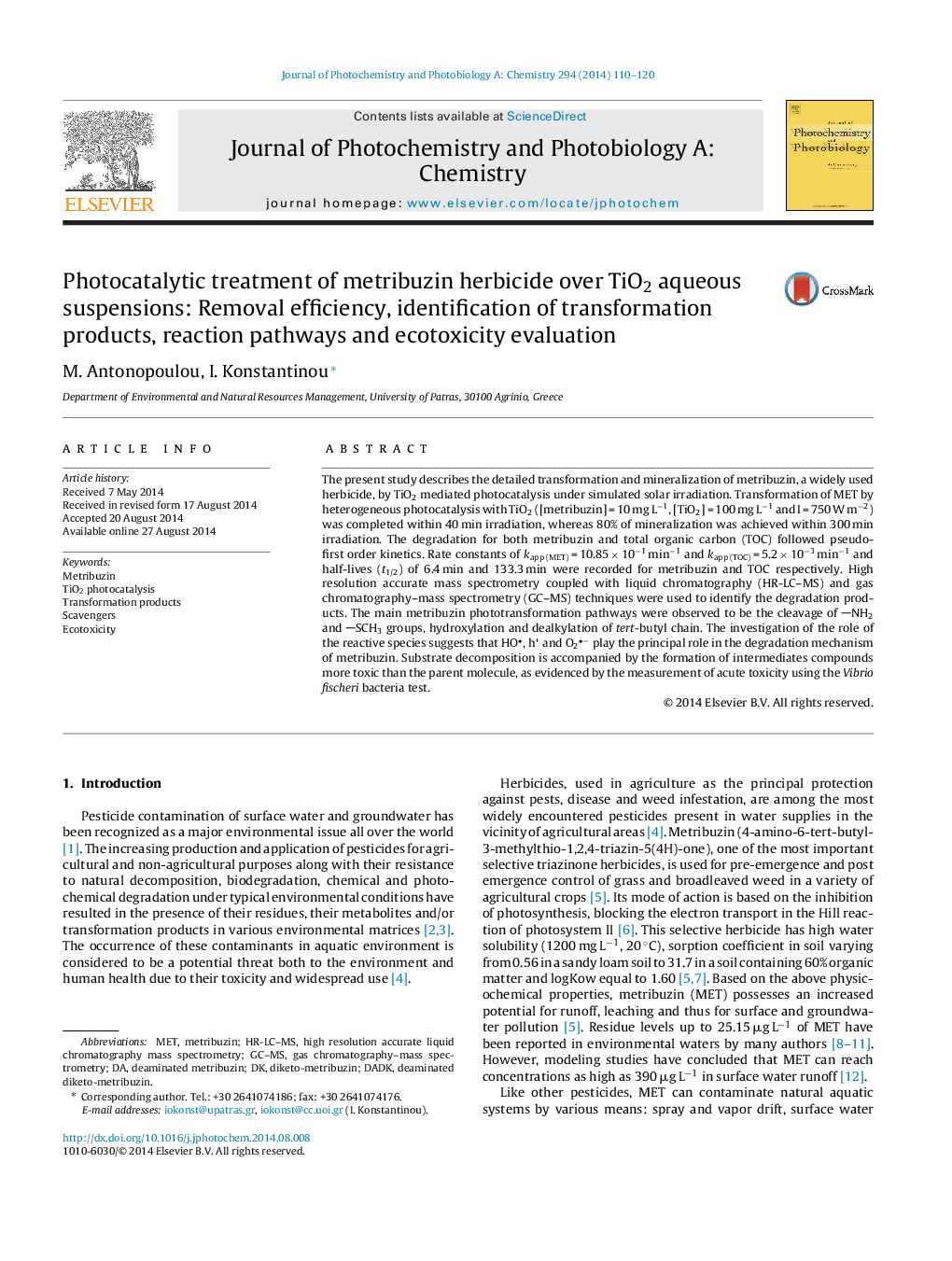| کد مقاله | کد نشریه | سال انتشار | مقاله انگلیسی | نسخه تمام متن |
|---|---|---|---|---|
| 26143 | 43936 | 2014 | 11 صفحه PDF | دانلود رایگان |

• TiO2 photocatalytic degradation and mineralization of MET have been investigated.
• Eleven transformation products have been identified by HR-LC–MS and GC–MS techniques.
• Reaction pathways included loss of NH2, SCH3 groups, hydroxylation, dealkylation.
• HO
• and in a lesser extent O2−
• played the main roles in the degradation of MET.
• Vibrio fischeri test showed increased toxicity at initial stages of the process.
The present study describes the detailed transformation and mineralization of metribuzin, a widely used herbicide, by TiO2 mediated photocatalysis under simulated solar irradiation. Transformation of MET by heterogeneous photocatalysis with TiO2 ([metribuzin] = 10 mg L−1, [TiO2] = 100 mg L−1 and I = 750 W m−2) was completed within 40 min irradiation, whereas 80% of mineralization was achieved within 300 min irradiation. The degradation for both metribuzin and total organic carbon (TOC) followed pseudo-first order kinetics. Rate constants of kapp (MET) = 10.85 × 10−1 min−1 and kapp (TOC) = 5.2 × 10−3 min−1 and half-lives (t1/2) of 6.4 min and 133.3 min were recorded for metribuzin and TOC respectively. High resolution accurate mass spectrometry coupled with liquid chromatography (HR-LC–MS) and gas chromatography–mass spectrometry (GC–MS) techniques were used to identify the degradation products. The main metribuzin phototransformation pathways were observed to be the cleavage of NH2 and SCH3 groups, hydroxylation and dealkylation of tert-butyl chain. The investigation of the role of the reactive species suggests that HO
• , h+ and O2
• − play the principal role in the degradation mechanism of metribuzin. Substrate decomposition is accompanied by the formation of intermediates compounds more toxic than the parent molecule, as evidenced by the measurement of acute toxicity using the Vibrio fischeri bacteria test.
Figure optionsDownload as PowerPoint slide
Journal: Journal of Photochemistry and Photobiology A: Chemistry - Volume 294, 15 November 2014, Pages 110–120